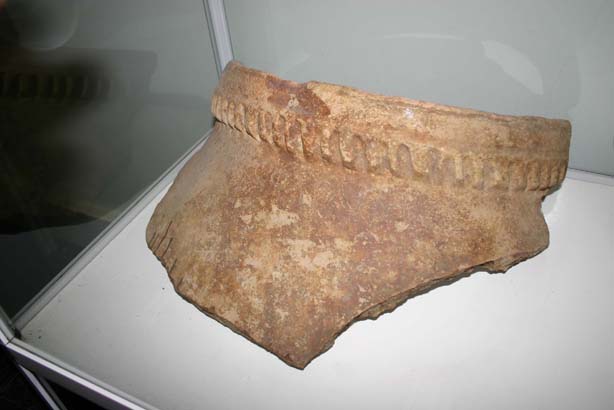
Лит.: Литвинский 1967а, с. 135; Бартольд 1971, с. 423, прим. 36; КВ № 387.
no364.jpg
3072x2048 (301,691 bytes)
| Prev | Index | Next |
 |
| Fired clay. Height of the preserved part of jar is 64 diameter of mouth is 42. Inscription is carved with the low throat and egg-shaped body; mouth is shaped by horizontal groove and deep slanting incisions. Inscription consists of eighth signs (height from 2 to 4), drawn before fired, ********. The root of this word, which describes noun its own Iranian (or narrower Bactorian?) and indicates "red". Last two letters are Greek end of nominative case 1 of declination (masculine gender). In the Iranian onomastics this noun is not known, but are testified several close ones phonetically, and in terms of the value of the nouns are produced from the same root (Юсти 1896, p. 292, 305). This is the first indisputable Greek inscription, discovered to the north of Amu-Dariya. On the stratigraphic conditions, it apparently relates to 1C BC. 1965, Excavation II, the layer of ЯВ-V, in the pit, gone down from the level of the eighth horizon. Лит.: Литвинский 1967а, с. 135; Бартольд 1971, с. 423, прим. 36; КВ № 387. |
|
no364.jpg 3072x2048 (301,691 bytes) |